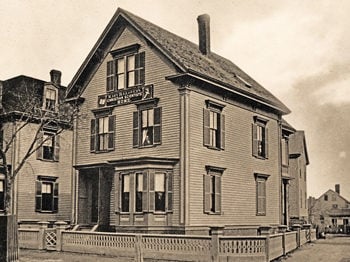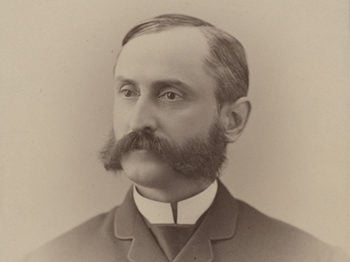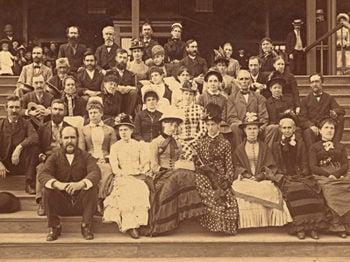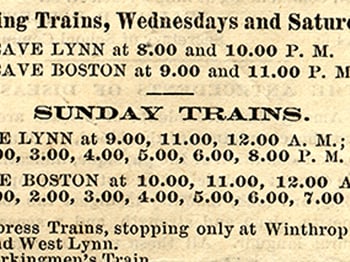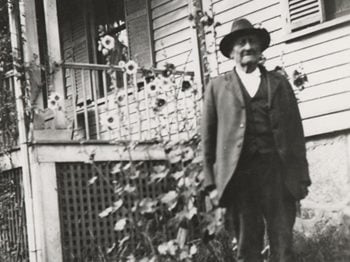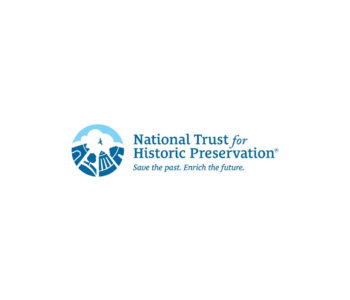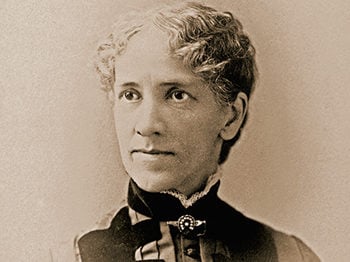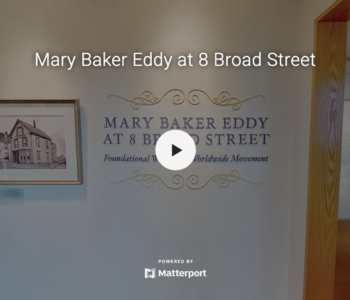In the pages of a weathered, Diamond-brand composition notebook, one of Mrs. Eddy’s earliest students recorded her personal memories of the Christian Science movement during eleven years of immense growth, both for herself and for the young Church.
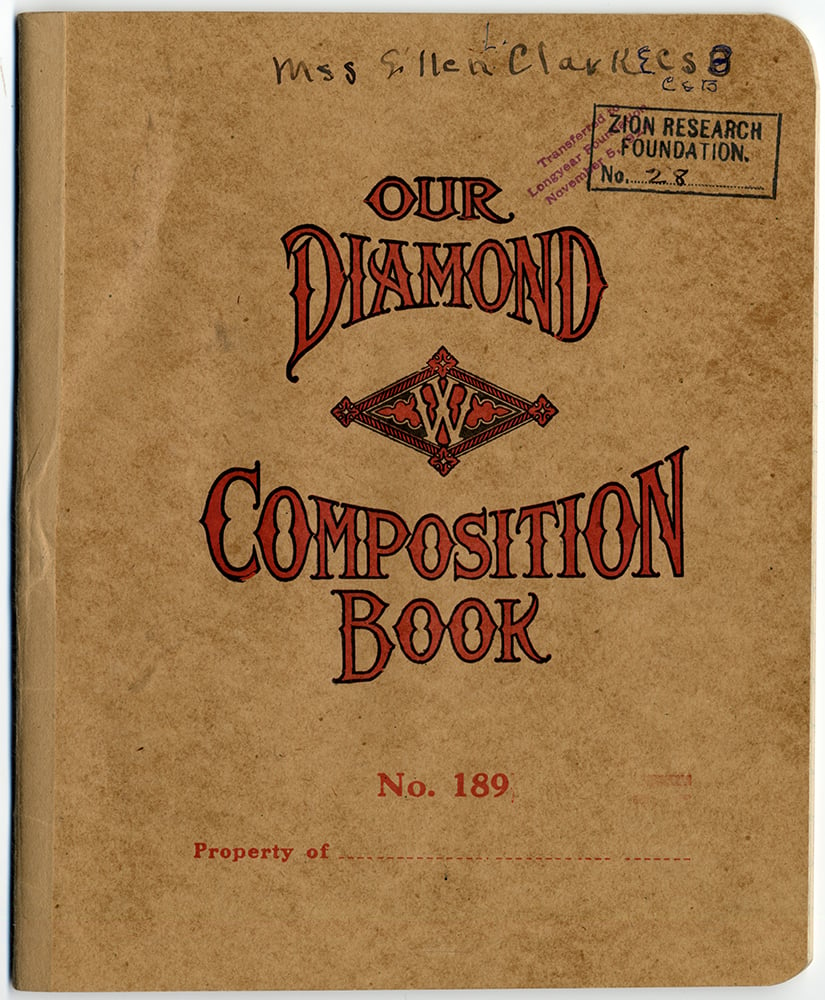
A native of New London, Connecticut, Ellen Latham Clarke1 moved to Boston in 1880, after suffering what she described as “a period of much trouble and distress.” When someone recommended that she visit one of the Christian Science meetings at Hawthorne Hall, where Mary Baker Eddy was preaching at the time, she had misgivings.
“I went rather reluctantly,” Mrs. Clarke wrote in her journal, “but with a longing that I might possibly receive something hitherto unknown, a higher sense of the relationship between God and man.”
Mrs. Eddy opened her sermon that January Sunday by reading the 14th chapter of John, then proceeded to preach from the text, “I am the way, the truth, and the life.”
“Shall I forget that day, or her face as she turned to the audience?” Mrs. Clarke wrote. “Her eyes rested upon me in so wonderful a way, that the tears welled up in my own, as if I knew God’s messenger stood before me…. Had she known all the weary way I had come to find this blessed Truth, she could not have spoken with more directness.”
Inspired by what she heard, Mrs. Clarke continued to attend services at Hawthorne Hall that winter. Then on February 23, Asa Gilbert Eddy came to visit her at her home. He presented her with a copy of Science and Health, the Christian Science textbook, and after their conversation told Mrs. Clarke that he felt she understood Christian Science better than many of his wife’s students.
“He seemed an honest man,” Mrs. Clarke noted in her journal, “but I simply thought he was mistaken, as I could not see how it could be possible, as I knew so little of Christian Science.”
Gilbert Eddy’s intuition about Mrs. Clarke proved correct, and she quickly demonstrated her value. That spring she went on an extended vacation, sharing Christian Science with those she met along the way.
“So … the seed was sown from Ogdensburg to Ottawa, Montreal, and far away Quebec,” she recorded, “but whether all the seed took root or not—I cannot say.”
By June, Mrs. Clarke was back in Boston, and that summer she experienced a healing.
“Sprained ankle,” reads her journal entry for July 14, 1880. “Had to demonstrate myself as there was only God to hear—and God did hear for it was instantaneous.”
In the fall of 1880, Mrs. Clarke was invited to study with Mrs. Eddy at her home at 8 Broad Street in Lynn, Massachusetts. The twelve lessons that comprised this class began on September 30 and finished on October 19, according to the journal, which also records Mrs. Clarke’s budding friendship with fellow student Julia Bartlett. The coming months and years would be peppered with mentions of visits between the two women, who would become some of the earliest of Mrs. Eddy’s students to remain faithful to the teachings of Christian Science.
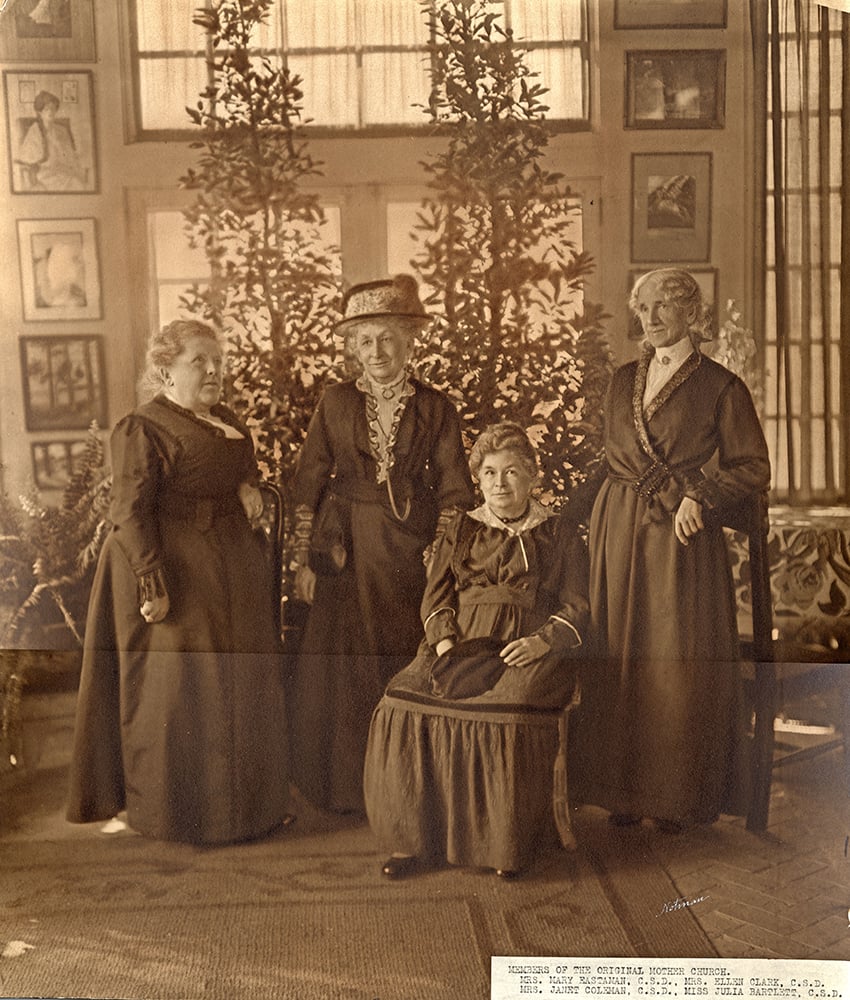
Ellen Clarke was an eyewitness to many moments in the history of the Christian Science movement, from the seminal to the more mundane. She writes of services at Hawthorne Hall that were so crowded “many had to go away,” and records the steady influx of new members to the fledgling church. In March 1881, Mrs. Clarke made her first visit to a meeting of the Christian Scientist Association (CSA), an organization of students who had taken one or more classes with Mrs. Eddy. Mrs. Clarke would join in March of 1885, and she became a member of the Church of Christ (Scientist) a year later. A frequent visitor at the Massachusetts Metaphysical College on Columbus Avenue in Boston, she attended CSA gatherings held there and elsewhere (“we had grand advise [sic] from Mrs. Eddy,” she noted after a July 1, 1885 get-together), as well as parlor lectures, meetings, and services around Boston. In April of 1887 Mrs. Clarke was present at the first annual meeting of the National Christian Scientist Association, held at Tremont Temple, and a few years later would travel to New York to attend the multi-day national convention.
Ellen Clarke was also present at the “Christening Service,” as she termed it, at Chickering Hall on February 26, 1888, when Mrs. Eddy baptized three of her visiting grandchildren, along with a couple dozen other children. “It was exceedingly interesting,” Mrs. Clarke recorded.2
Ellen Clarke eventually entered the full-time practice of Christian Science, and was listed in The Christian Science Journal beginning in January 1889. After having been part of the church governance in the CSA, she was selected by Mrs. Eddy as one of twelve founding members, or “First Members,” of the newly-reorganized First Church of Christ, Scientist, in Boston, in 1892. Joining her in this honor was Mrs. Clarke’s old friend and fellow member of the September 1880 class, Julia Bartlett. Miss Bartlett and Mrs. Clarke would both later join a group of some fifty of Mrs. Eddy’s students, each of whom contributed one thousand dollars (husbands and wives counting as a single household) to help fund the building of the Original Edifice of The Mother Church.3
Although Mrs. Clarke’s journal is succinct, it offers an intriguing series of snapshots of the Christian Science movement as it grew from humble beginnings to a world-wide religion.
View Ellen Clarke’s Journal below.4
